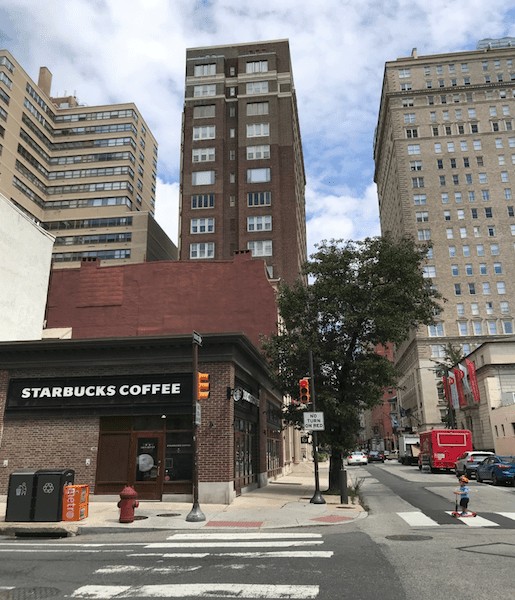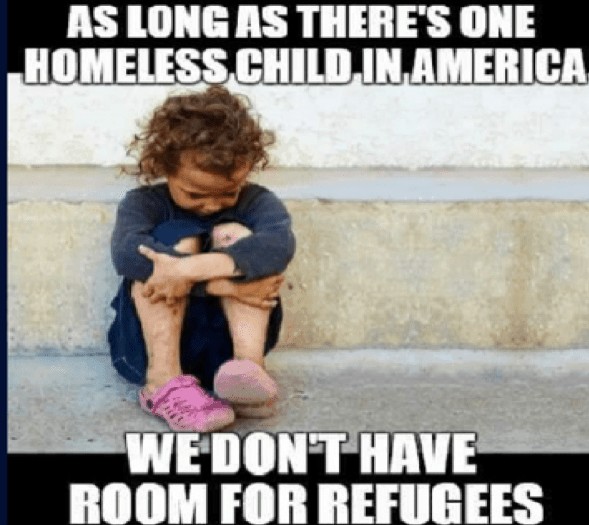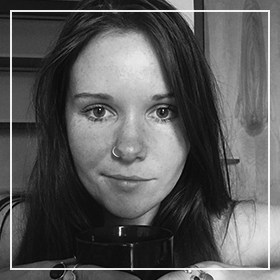Dehumanisation is at the core of displacement: it requires that a group of people—because of race, class, migration status, or other factors—have lesser access to the resources, the places and spaces, that others find freely accessible.
Two blocks away from the small apartment in inner-city Philadelphia where I currently live is one of the many ubiquitous Starbucks cafes that occupy various corners across the city. I have never stepped into this particular Starbucks myself, but it was nonetheless instantly recognisable to me when, earlier this year, photos of it were plastered all over national and international news outlets after two black men had the police called on them by café staff, and were subsequently arrested and held in jail for several hours, for the “crime” of trespassing: they had been waiting to conduct a meeting in the Starbucks with a business associate before paying for a beverage. Hastily recorded phone footage of the two men being handcuffed and escorted out of the Starbucks by police officers, to the admonishment of seemingly incensed white onlookers, subsequently went viral.

Over the coming weeks, as I passed by walking to and from my nearby apartment, I observed first-hand how that particular Starbucks became the site of ongoing protests. The Mayor of Philadelphia responded to the footage, claiming to be “heartbroken” to see the city headlining global media in a way that would seem “to exemplify what racial discrimination looks like in 2018.” Despite the attempt to recast the Starbucks incident as an unfortunate and exceptional event, it is an escalation that reflects more routine policing of boundaries that are pervasive I the city. Such forms of urban boundary making might seem far removed from situations of displacement. Nonetheless, I want to consider here that similar logics of dehumanisation are at the core of how people come to experience or be represented as in- or out-of-place, and how a more expansive understanding of displacement can bring attention to these dynamics.
A Coffee in Starbucks
Last month I stepped into a different Starbucks in Philadelphia, only four blocks over from the now-infamous site of the arrest incident, with Robert. It had been his choice to go to the Starbucks to get some coffee and to talk in more depth about his life than we could on the surrounding street, which is where we usually meet and talk in between the gentle rumble of Robert asking people who pass, “Spare some change?” Making conversation somewhat loudly in the otherwise quiet café as we finished preparing our coffee, I felt the glances of other patrons glide over us in that looking-but-not-looking way that people do.
Prying glances are not new to Robert and I. A relatively young-looking white woman with an Australian accent making conversation with a black man with a Southern twang in his late-60s, I have become used to drawing attention when I sit with Robert as he panhandles on the street. I have learned to time my visits to Robert for relatively quiet times of the day, away from when the office workers from surrounding buildings break for lunch or the end of the workday, so that my presence does not impact on his panhandling. When I sit beside Robert he is more likely to attract curious glances than spare dollar bills.
The attention we seem to elicit at the Starbucks nonetheless makes me feel uncomfortable. The viral video of the Starbucks arrest scene from earlier in the year haunts me as Robert and I find a quiet corner to sit down in and talk, knowing that the stakes of this discomfort are so much higher for Robert, than for me. I remind myself that it is only for an hour or so out of this particular day that I am discomfited, purely by association with Robert, from the usual ease through which I navigate the urban spaces of the city that are dominated by professionalism and whiteness.
For a person like Robert, who embodies both blackness and visible impoverishment through panhandling, occupying these particular streets in Philadelphia is a constant exercise of negotiating between visibility and invisibility, between attracting attention and preventing punition.
Robert is one of the estimated 550, 000 people in the US who, on any given night, are homeless. He first ended up living on the streets some years previously when, after first coming to Philadelphia from the South and living out of his car, the car was impounded by a particularly zealous ticket issuer. Since then, Robert has lived on the streets of Philadelphia off and on. As we sit together in the Starbucks to talk, Robert is quick to tell me that he will defend himself against people who “start” on him, but he also notes that he purposely adopts a demeanor of deference when he panhandles in the city. Not because it may soften people up to part with a spare dollar, but because it is a necessary part of avoiding police intervention. I am visibly shocked, at first, by the casual way that Robert talks about the necessity of playing this compliant role, because part of the “progressive” reputation of Philadelphia is a generally non-punitive stance toward the homeless and people who panhandle by local authorities. But Robert corrects my understandings, and shakes his head. “It’s all about how they write you up,” he says. “They just write you up for being aggressive, or intimidating, or whatever, and then you are locked up in jail with a $315 dollar fine.” What might appear to be somewhat minor instances of punitive action slowly compound in ways that make the city easily accessible for a privileged some, but a space of constant negotiation for others.
When Robert asks me why I am so interested in researching the experiences of homeless people, I tell him about how, when I first moved to Philadelphia a year previously from a regional city in Australia, I had been shocked by the visible acceptance of street homelessness.
I had found it impossible to reconcile that people like me could live more than comfortably within metres of people sleeping on grates to keep warm. I could not understand how the vast majority of people would casually walk past others laying on the street and pretend that they did not exist. Robert nods, and tells me that, although many in the neighborhood where he panhandles are good people, so many others just walk by, ignore him, admonish him. “Arrogance,” he says. “Some people just cuss you out.”
I go on to add that these kinds of tacitly accepted routines of dehumanisation are especially confounding to me at a time when homelessness is frequently being represented as the foil against providing support to refugees. Public and political rhetoric about the imperative to support people who are homeless does not correspond to how I have observed people routinely ignore homelessness on the street. “Ah,” Robert says in response, seeming to draw connections between his own experiences of dislocation and those of people who flee their country: “People move, leave their country, to find freedom… but [making a sweeping gesture with his arms around him] where is that freedom?”
Refugees vs the Homeless: False Binaries and Shared Dehumanisations
It is homeless people like Robert who have been brought into the centre of political debates, and conservative activism, about displacement in recent years in the US. In the wake of the Syrian civil war and the significant number of people fleeing it as refugees, political talk across the globe turned towards how to respond to what would become the largest number of forced migrants ever recorded. One particularly tangible response from conservative and right-wing rhetoric in the US centred on a perceived imperative to provide care for people within the country, first, rather than to refugees fleeing other countries. In the US (and elsewhere), homeless people, and especially homeless veterans, have become a foil against an argument to provide support to refugees. A number of memes expressing this binary between refugees and homeless people circulated, such as those below:
Of course, the binary between refugees and homeless people is false: a simplistic misrepresentation that pits vulnerable groups against each other in some kind of grotesque competition of needs but which, in reality, seeks to legitimise fear of the migrant other by drawing attention to the other at home.
What is so absurd about the false binary drawn between refugees and homeless people is that the comparison requires that both groups be objectified and dehumanised in the same way. Regardless of whether the rhetoric stems from a liberal or a conservative standpoint, when dominant factions in society begin to debate the worthiness of a particular category of person, those who form the group are often themselves, ironically, silenced. They cease to exist with the complexity and contradictions of human being.
In pitting refugees and homeless people against each other in such a misleading binary of competitive needs, the complexities and heterogeneity of both groups is silenced and objectified.
As an anthropologist who has worked extensively with people in refugee situations, the more time I spend in the US, surrounded by such contradictions, the more the similarities between people who become refugees and people who are experiencing homelessness seem to be more salient than their differences. Robert, who considers both situations to be a problem of restricted freedoms, agrees. Given that both refugees and homeless people are, effectively, living to some extent without the stability of home, it made sense to me to begin taking seriously the connection between these two categories of person: not in the same way as right-wing rhetoric which would force a dual analysis through false comparison, but to instead consider these distinct situations through a shared analytical locus of displacement.
Beyond Crisis: Unexceptional Displacements
Displacement is often treated as an exceptional experience that is associated with refugees and forced migration. Recent representations of migration “crisis,” in response to the record number of asylum seekers entering Europe from 2015, have further reinforced the exceptionality that is attached to displacement. The irony is that by reinforcing such national logics through analytically limited conceptualisations of displacement that conflate it with forced migration, anthropologists are unwittingly playing into the very nationalist logics that right-wing activists use to pit homeless people and refugees against each other in a constructed hierarchy of needs.
Recognising that the recent attention to displacement in anthropology has as much to do with popular narratives of crisis as it does with the empirical realities of forced migration for displaced people is important, because even the idea of crisis signals a distinct temporality of urgency and exceptionality. The term crisis implies an event: a distinct problem to be solved. Approaching a particular experience, process, or event in anthropological research through a narrative of crisis has an effect, then. It charges the object of study and demands urgent response. Primarily, it sets up a dichotomy between a supposedly stabilised normalcy and the exceptionality of the crisis event.
But can displacement itself be chronic, routine, normal, unexceptional?
Displacement, according to Robert, is about the ways that some groups of people have the freedom to access some places while others do not. Whether referring to the contested freedoms of homeless people seeking to set up for a day of panhandling on the street, the constrained freedoms of refugees seeking entry into Europe, or the freedom to wait for a business meeting to begin in a Starbucks, the logics of boundary maintenance are similar: accessing spaces that have been conventionally dominated by whiteness and class-based exclusions require deference and containment, control and compliance. The displacement of forced migration is not labelled a crisis until its effects begin to extend beyond countries in the global South and begin to impact on Europe. Similarly, homelessness is not labelled a crisis until its effects begin to extend beyond the impacted people themselves and begin to mark the reputation and image of the cities or areas in which homeless people seek shelter. Dehumanisation is at the core of displacement: it requires that a group of people have lesser access to the resources, the places and spaces, that others find freely accessible.
Ultimately, displacement means being forced to feel or be out-of-place. There is a lot to gain in anthropologists recognising how such dynamics of displacement manifest in the lives of people across different situations and contexts. The question of whose displacement is made to matter and why, as well as whose displacement becomes routinised and accepted, presents as much analytical promise as bringing attention to the dehumanisation that is at the core of displacement itself.







